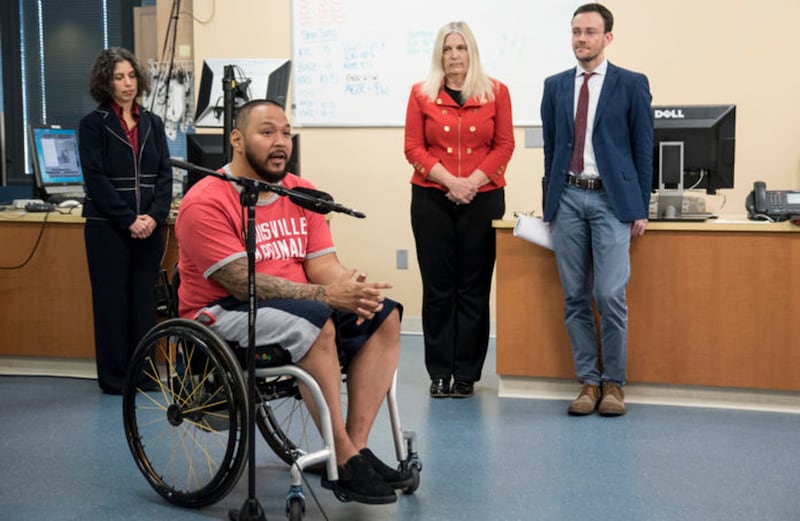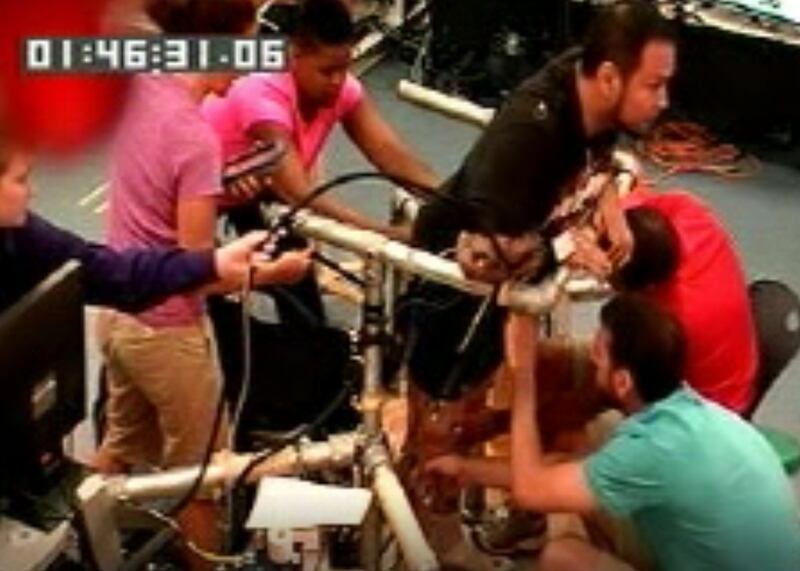A man who was paralysed after suffering a severe spinal cord injury in a motorcycle accident has regained the ability to stand and move his legs on his own following breakthrough treatment.
Andrew Meas, who lost the ability to move his limbs six years ago, took part in a clinical trial conducted by the University of Louisville’s Kentucky Spinal Cord Injury Research Centre.
The treatment involved using epidural stimulation on the spinal cord, known as scES, combined with activity-based training.
A device that sends electrical signals to motor neurons was inserted into Meas’s spinal column for stimulation.
The spinal cord connects the brain to almost every part of the body so severe damage means it is unable to send electrical signals to the limbs. And that is where scES comes in.

Meas initially enrolled in a different rehabilitation programme but it yielded no tangible results after 21 months of therapy.
But after taking part in the scES trial, he and three other participants regained the ability to stand and move their lower limbs.
At the end of the trial, Meas was selected to continue the therapy using the scES device at home.
After a year of independent training, he returned to the lab to train but this time the researchers prescribed a new training schedule.
It involved two daily hour-long training sessions and included both stand and step training each day.
After three months, Meas was able to stand and move his legs without the need for scES stimulation, resulting in a breakthrough.
“It’s a miracle to still be alive,” Meas said. “I am on the road to almost finding a way to overcome paralysis. We have seen the improvements. I am just happy to be where I am at right now.”
Lead study author Enrico Rejc, an assistant professor in the UofL Department of Neurological Surgery, said: “We observed that in participants we have worked with so far, eight months of activity-based training with stimulation did not lead to any improvement without stimulation.
“This participant kept training at home and, after several months, he came back to the lab and we tried a different training protocol.
“After a couple of months of training with the new protocol, we surprisingly observed that he was able to stand without any stimulation – with two legs and with one leg – using only his hands for balance control.”

According to the researchers, the results suggest that the scES may have “promoted remodelling of connections among neurons in the spinal cord”.
Rejc said: “The voluntary component of him trying constantly with spinal stimulation on and while performing motor tasks can lead to unexpected recovery.”
Meas added: “It’s a moment of hope … not just for myself but for the whole spinal cord injury world.”
The results are published in the journal Scientific Reports.








